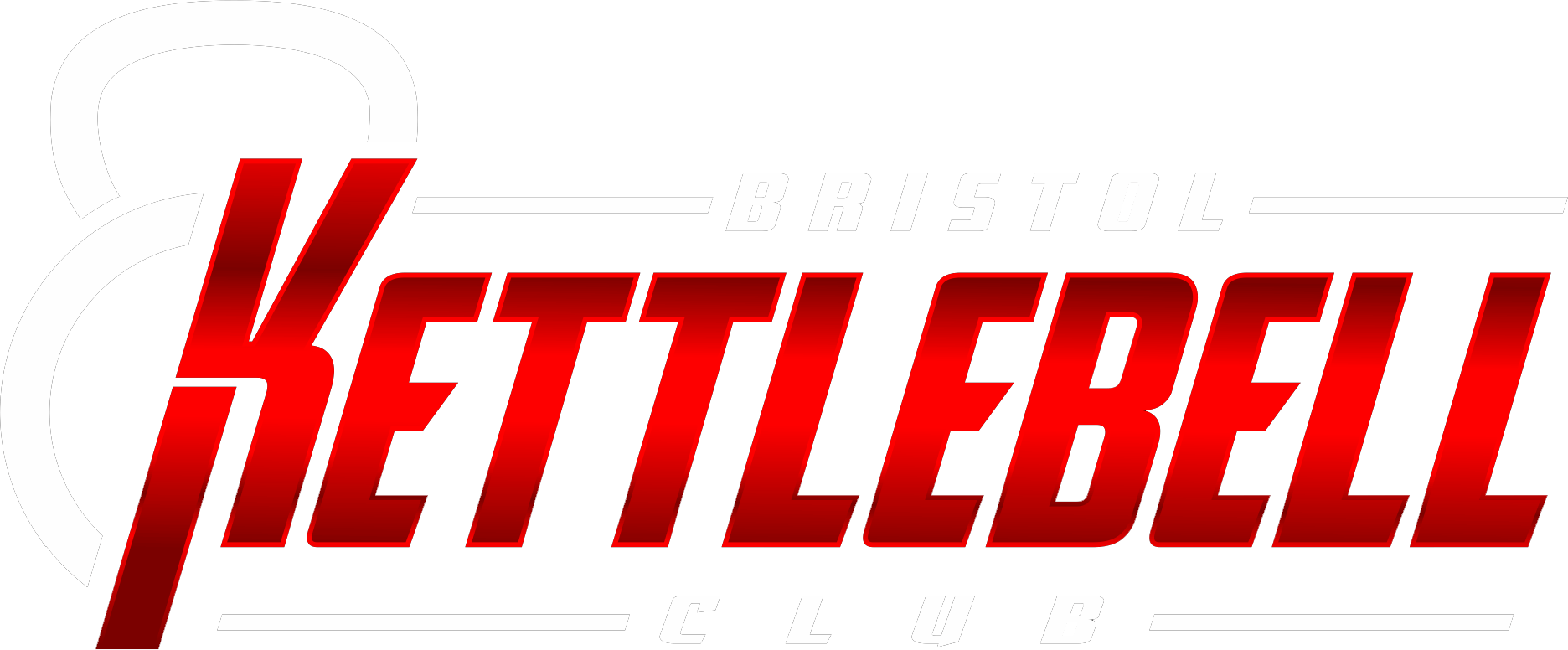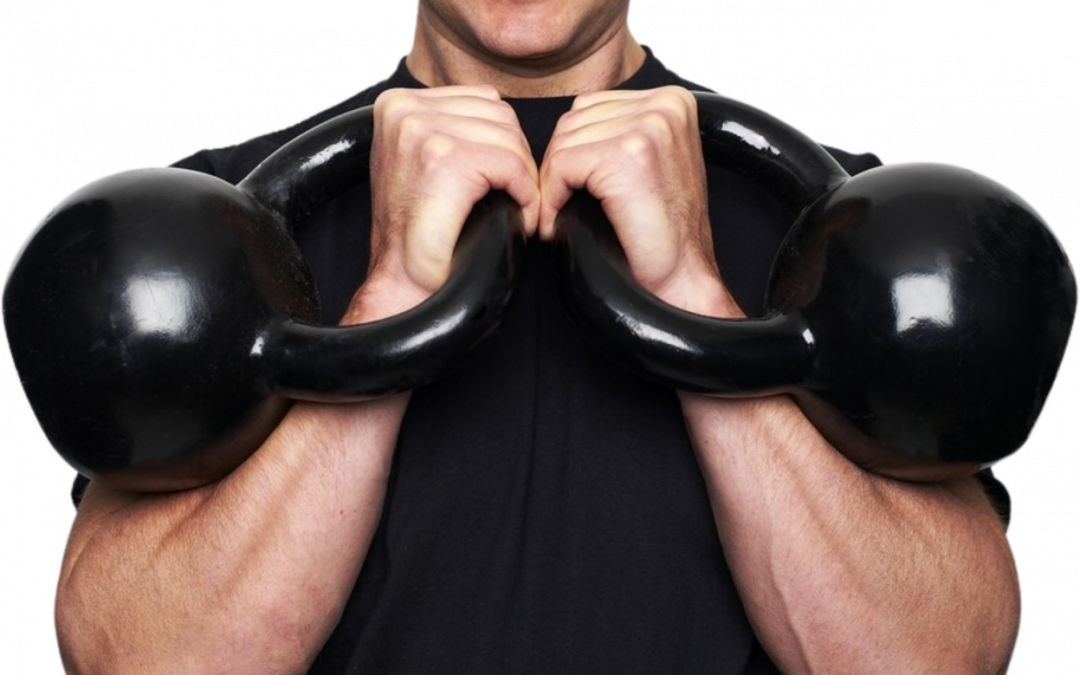Last time I checked there are about 3 million different exercises you can do with a kettlebell, so which ones are good for building muscle and which ones are not?
Furthermore, kettlebells are often thought of as a cardio or strength endurance tool and are often used in bootcamps and HIIT classes.
Are the kettlebell exercises performed in these classes good for building muscle?
All of these questions and more are answered in todays blog post.
Don’t forget to leave a comment if you have any questions that I didn’t cover.
How is muscle built?
You’ll build up your muscles if you continually perform a kettlebell muscle building exercise each week and look to either add weight, reps or sets over the course of a few months. A bit like we do in our Wednesday evening 7pm class Kettlebell Grind. Grab a free taster session here if you’d like to come along.
Whats a good kettlebell muscle building exercise?
Well you have two options, you want to use a compound exercise or a single joint exercise.
And it needs to be a static exercise not a dynamic exercise.
An exercise is considered a compound exercise if there is more than one joint moving to perform the exercise. Otherwise it’s a single joint exercise.
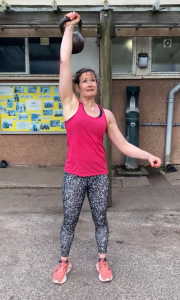
Single bell military press. A compound exercise.
Both are great options to build muscle.
Exercises can also be categorised into static or dynamic. You might also hear kettlebell exercises get divided into ballistics and grinds.
Ballistic = dynamic
Grinds = static
Dynamic exercises are not a good choice for muscle building.
An example of a dynamic exercise within the kettlebell world would be the swing or the snatch.
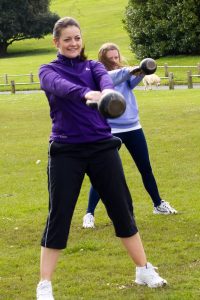
The Kettlebell swing
Why are ballistic kettlebell exercises not good for muscle growth?
Reason number one – Ballistic means fast, and whenever a muscle lengthens at speed, it produces less force than it would when lengthening slowly.
Less force means less mechanical tension, which is the primary mechanism for muscle growth to occur.
Reason number two – The force vector is not conducive to muscle growth in the kettlebell swing or snatch.
When we perform a kettlebell muscle building exercise we have to produce force. A force vector refers to the direction of force relative to the body.
The force can be applied perpendicular to the spine, thats called an anteroposterior force vector, or it can be applied parallel to the spine, which is known as an axial force vector.
A squat for example, has an axial force vector. When you perform a squat, you have to produce force vertically to lift the weight.
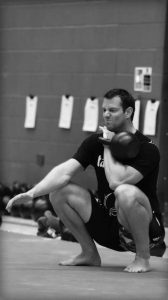
The squat is a great choice for muscle growth.
Now compare that to the common glute exercise the hip bridge. You are lying horizontally but you are producing force vertically. Is it still an axial force vector?
In this instance the force vector is anteroposterior. You are producing force perpendicular to the spine rather than parallel.
Within these force vectors you also have to consider the effect of gravity and inertia.
The glute bridge example above has you working against gravity to lift the weight, but consider in the kettlebell swing, which also has an anteroposterior force vector, where is gravity exerting its effect and on which muscle?
Inertia in the squat happens at the hardest point of the lift, the bottom, this is also when the muscles are in their most stretched position, which is the most ideal position for muscle growth, you also have gravity exerting itself onto you.
These are all characteristics of the perfect exercise for muscle growth to occur.
Where is inertia in the kettlebell swing? Does it make the exercise easier or harder?
It makes it easier to move the load. So in the swing we don’t have to fight against gravity or inertia and the force vector isn’t loading the target muscle, which is arguably the hamstrings and glutes.
Ballistic kettlebell exercises are great for building strength, strength endurance and cardio-vascular fitness, but they are a poor choice for muscle growth.
Which kettlebell exercises are best for muscle growth?
Good muscle building exercises include squats, rows, deadlifts and presses, and these come in many different variations.
Here are some of the best that you could do using kettlebells:
Squat variations
- Double front squat
- Hack squat
- Bulgarian split squat
- Goblet squat
- Double reverse deficit lunges
Row variations
- Bent over row
- Gorilla row
- 3 point row
- Lockout rows
Vertical Press variations
- Double military press
- Single military press
- See Saw press
- Seated press
Horizontal press variations
- Floor press
- Hip bridge floor press
- Bench press (if you have a bench)
- Exercise ball bench press (if you have a Swiss ball)
Hinge variations
- Single leg deadlift
- Sumo deadlift
- Romanian deadlift
As you can see there is plenty of variety to build an excellent muscle building program using kettlebells. Most of these exercise can be loaded for many years, which means your muscle building potential is massive.
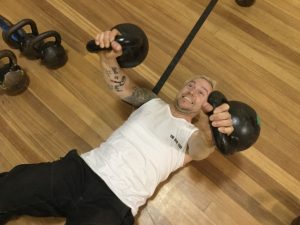
The Floor press
The category that is a bit lacking is hinge. Mostly because you’ll run out of loading options fairly quickly, within a year if you are serious about your training. Yes you could go for a long time with the single leg deadlift, but if thats your only option, you might get bored with it and/or not even like the exercise in the first place.
Choosing exercises you enjoy is key for progression. You’ll train harder if you enjoy them.
So for the best possible kettlebell muscle building program, I would recommend you add body weight exercises of which there are some excellent choices that will add to your muscle building potential.
Just as a safety note here – You’d want to be careful with the Swiss ball bench press. Make sure the ball is capable of taking your weight plus the combined weight of the kettlebells. I have had heard of those ball bursting under too much load.
What would a kettlebell only muscle building program look like?
If you have 3 days per week for this goal, I’d suggest you do full body workouts. In which case, pick one exercise variation from each category
- Squat
- Hinge
- Press
- Row
A simple progression would be to move from 5 reps to 10 over 3 or 4 sets. When this is achieved increase the load.
It doesn’t have to be that rep range, it could be from 10-15. It really doesn’t matter, as long as there’s progressive over load you’ll build muscle. The lower rep ranges have the added benefit of inducing strength adaptations also.
If you have 4 days per week, you might consider doing two upper and two lower days. Now you can select two exercises from each category for each day.
Day 1 – Upper
- Single military press
- 3 point row
- Hip bridge floor press
- Bent over row
Day 2 – Lower
- Double front squat
- Single leg DL
- Goblet squat
- Sumo DL
Note in this example, I’ve mixed up single limb exercise with bipedal movements?
A third option would be A and B full body workouts that you simply rotate over whatever days you have available to train.
To come back to the original question – Can kettlebells build muscle, the answer as you’ve now found out is yes, but only if you select the right exercises and follow some type of progressive over load model.
Thanks for reading, if you have any questions, please leave a comment below.
Good luck with your training
Pete
Owner, head coach at Bristol Kettlebell club.
PS – If you need some help putting together a program, consider buying this custom program design offer.
PPS – If you’re curious about kettlebells and/or would like to get your form checked, use this free taster session membership to come along to either Saturday at 10am or Wednesday at 7pm and I’ll personally coach you into better technique.
